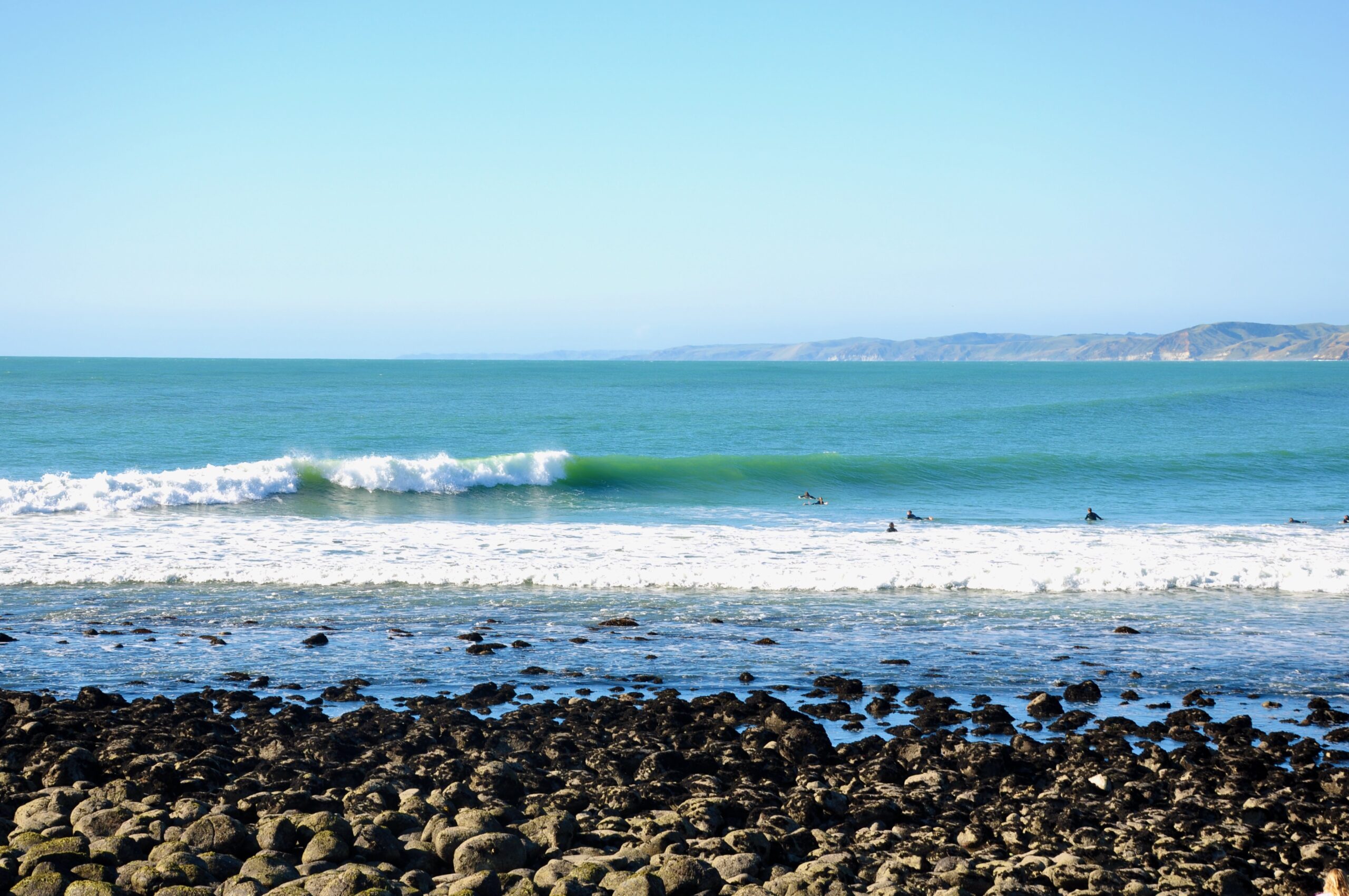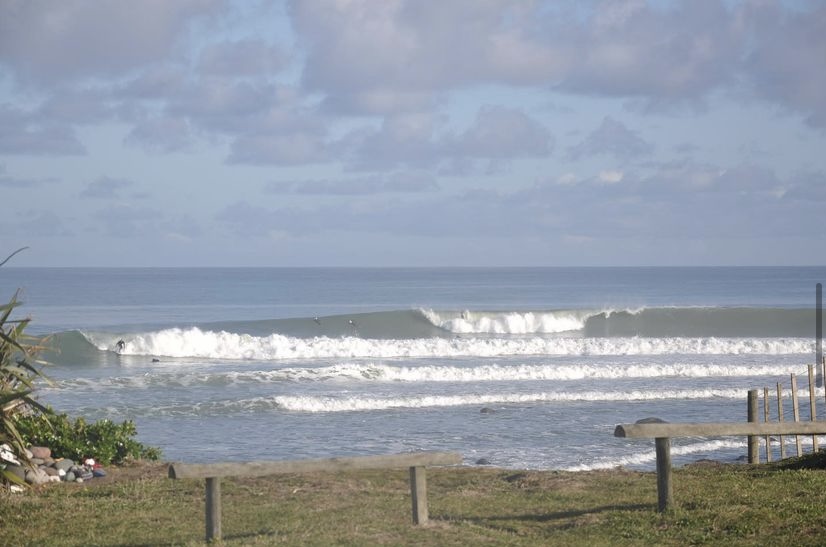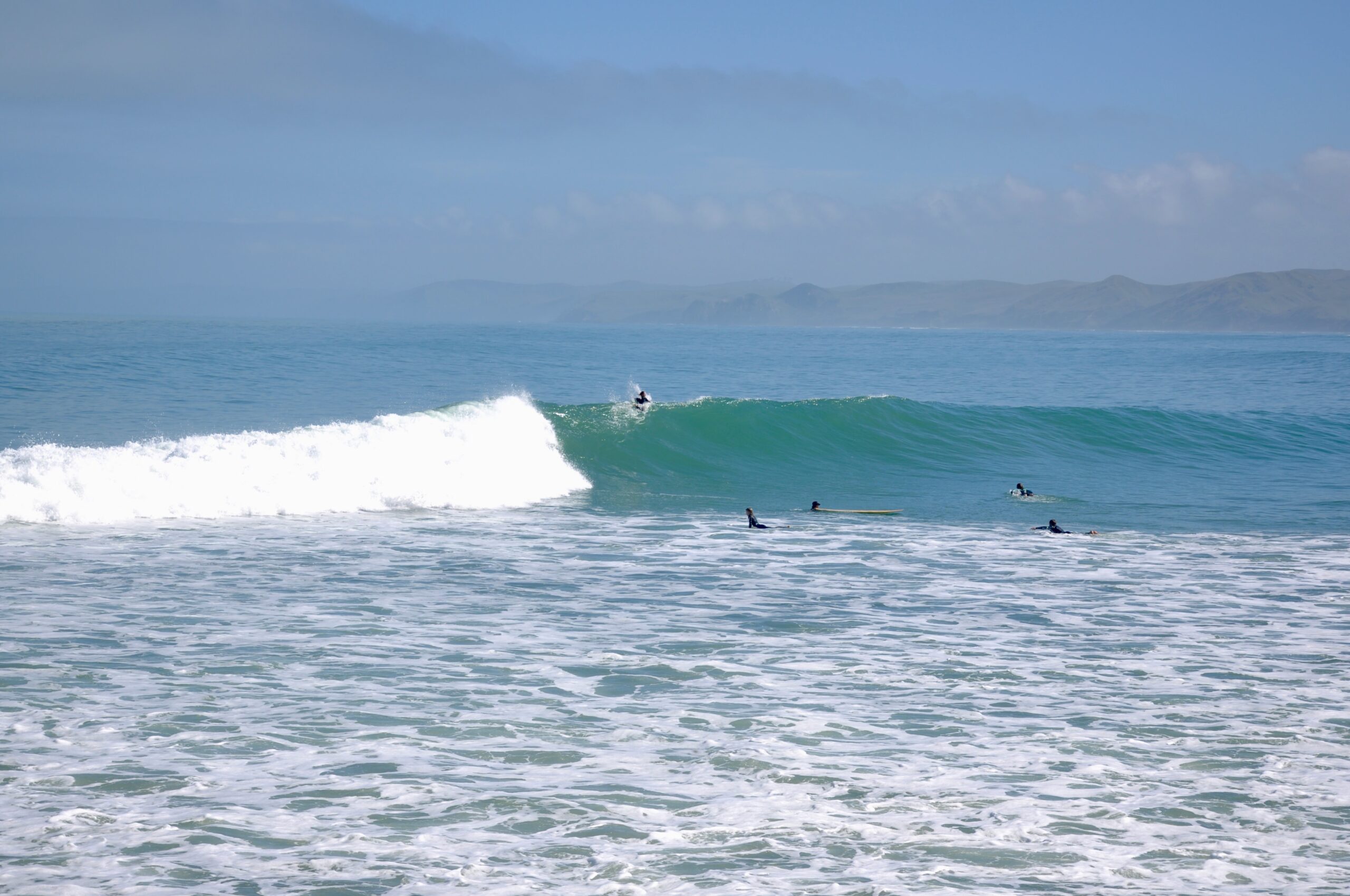New Zealand or “Aotearoa” as it is known in Maori, promises waves of all kinds, adventure, stunning scenery, friendly people and driving… hours and hours of driving. But across the North and South Islands, there is every wave you could ever hope to surf, here’s a rundown on what to expect from surfing in New Zealand.
Overview
- Variety
- Consistency
- Beautiful country
- Crowds
- Driving
- Cold weather
Table of Contents
Best Time of Year
The best time of year to go surfing in New Zealand is any time of year. But it depends on which part of the country you’re in. The West Coast has waves year-round and autumn (April – May). is generally considered the best time to score here. On the East Coast, the best time to surf is summer. (Jan – April). This is when summer cyclones, send swell to the coast. These storms are the same ones that light up Australia’s Gold Coast.

New Zealand Surf Destinations
New Zealand’s humungous coastline hosts waves of all shapes and sizes. While there are many secret corners in the country, I’ll let you find those for yourself, here are some of New Zealand’s most famous surf breaks.
Piha
Piha is the closest surf break to Auckland, (45 minutes away), so as you’d expect it gets super crowded. Thankfully, it’s one of the most consistent surf breaks in the country and picks up any smidgen of swell in the water, so there are always waves to go around. If anything, it’s often too big to surf and you find yourself battling rip bowls on the inside.
Raglan
Raglan is the jewel in the crown of surfing in New Zealand. one of the world’s best surf towns, that hosts three left points. Manu Bay is the most perfect and popular, with beautiful left walls for tubes and turns–an incredible wave on its day, just don’t expect to be surfing alone.
Indicators is another world-class point that picks up a touch more swell than Manu but breaks faster and is trickier to ride, but when conditions align, expect leg-burning lefts, with tube sections racing across the rocks. Read more about surfing in Raglan.
Taranaki
Everywhere you surf here, you look back up at the giant snow-capped stratovolcano, Mount Taranaki. Along the coast runs the famous Surf Highway 45, a coastal road that takes you past dozens of wicked surf breaks. Stent Road is the best and most famous, a super fun, powerful right point, for high-performance surfing. There are so many spots here, you’ve just got to drive and hunt where to surf depending on the wind.
Mount Maunganui
Mount Maunganui is a beautiful town, home to one of New Zealand’s top surfers, Kehu Butler. In town, you’ve got a long stretch of open beach break that can have fun peaks spending on the banks. Then, closer to the Mount, you’ve got Main Beach, a beginner-friendly option on small days, whereas, on bigger swells, the bay here provides shelter from swell and wind. There’s a handful of other interesting waves in the vicinity, but I’ll let you find them yourself.
Coromandel
The Coromandel Peninsula is a beautiful part of the North Island with dozens of surf breaks, mostly fun beachies. But scoring the bets banks on the best days is an art form that even the most experienced wave chasers haven’t mastered. Known as the Coromandel shuffle, you’ll spend so much time here, driving and checking spots, only to end up where you started. It’s just part of the game. Start at Whangamata and go from there.
Gisborne
Gisborne is another wave-rich slice of the Kiwi coastline. There are so many waves here and the area receives swells from all directions. I spent 3 months in Gisborne and it wasn’t flat once. Wainui is the go-to, a powerful beach break that can throw a-frame tubes on the right day. For something more mellow, check out Gizzy Pipe in town. Up and down the coast, you’ll find any number of breaks, but in the spirit of true surf adventure, I’ll let you hunt them down for yourself.
Kaikoura
On the South Island, Kaikoura is one of the more sought-after surf spots. It’s one of the most beautiful places I’ve ever surfed in my life, we’re talking looking back up at snowy mountain peaks from the water. Mangamanu is a long right-hand point that works in bigger swells, whereas Meat Works is the go-to swell magnet. Expect crowds and cold water!
Dunedin
Dunedin is the main surf town/city on the South Island and promises both consistency and variety. While the city itself isn’t amazing, the surrounding coastline is stunning and offers the potential for hollow beachies, wedges, and slabs. St Clair is the main beachie in town, but on bigger swells, the surrounding coastlines offer some really fun point breaks and are some of the best waves in New Zealand on the right day. One of the world’s top coldwater surfing destinations.

How to Get There?
For the North Island, fly into Auckland International Airport and start your surf trip from there. If you want to start in the south, fly into Christchurch and drive from there. There are also domestic flights between major towns. For example, you can fly from Auckland to Dunedin. Check prices on Skyscanner.
Getting Around
By Car/Van
By far the best way to get around while surfing in New Zealand is by car or van. Many of the spots require long drives and most spots aren’t located in the main city or town. Check our Discover Cars for the best rental cars or Jucy Campers, for something with everything you need to live on the road.
Public Transport
In theory, you could take the bus between major cities in New Zealand, but then, you’re still going to need transport to access most of the breaks. If you can’t drive or you are on a tight budget, I’d recommend staying in Mount Maunganui and surfing out front. You could also do the same at St Clair in Dunedin.
New Zealand - Travel Information
Flight Times:
- LAX – AKL: 13h 0m
- SYD – AKL: 3h 5m
- LHR – AKL: 23h 45m+
Visas: 3-month visa on arrival and working holiday visa
Currency: $NZD
Language: English
Tips for Surfing in New Zealand
Distances
There are large distances between the main surf spots in New Zealand and to score the best waves, you’ll need to drive! With the expectation of the Auckland area, there are no main highways that cut across the country, so you’re often driving on single-lane highways. For example, it takes over 6 hours to drive from Ragalan to Gisborne.
Weather
I won’t lie, the weather gets bleak in New Zealand, particularly in winter. It gets cold and windy and storms often batter the coast. The South Island is super cold, we are talking low single digits in winter, and moderate summers. Whereas the North Island is a tad warmer, with chilly winters and warm summers.
Crowds
The main surf spots in New Zealand are all crowded, for example, you’re never going to be surfing in Raglan by yourself. But if you’re prepared to drive and hunt places down, you’ll get a few waves to yourself.
Localism
There is some localism in New Zealand, particularly at the lesser-known spots and the locals usually get their waves on the best days at the premier breaks. But exercise the usual “respect the locals” attitude and you’ll be fine.
Free Camping
New Zealand is well set up for van life and camping, however, there are some rules you need to be aware of. There are many free camping spaces throughout New Zealand, but many of them are only for self-contained vehicles. Read more about what a self-contained vehicle is here.

Non-surfing Activities
- Mount Ruapehu
- Rotorua
- Walk Mount Maunganui
- Bridal Veil Falls (Raglan)
- Arthur’s Pass
- Lake Tekapo
- Milford Sound
- Fox Glacier
Final Words
New Zealand is one of the best surf adventure destinations on the planet and there are few places where you can score world-class waves, live outdoors and see some other amazing things than New Zealand. I spent two years living and surfing in New Zealand, so for any more information, please flick me a message below.
